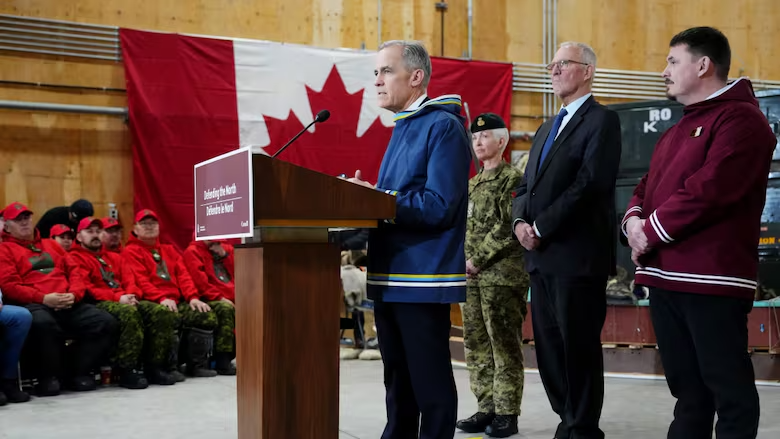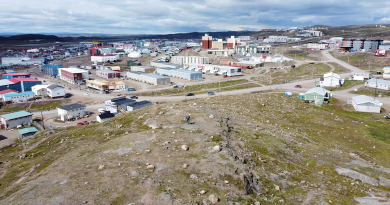Experts Arctic early-warning radar project news, want detail on other North promises

Other investments may not go far enough, say some
Canada’s plan to build an early warning system to better protect the Arctic is being welcomed by some who work in and study the North.
Prime Minister Mark Carney announced in Iqaluit on Tuesday that Canada would be working with Australia to build the Arctic Over-The-Horizon Radar System, which he said would detect and respond to air and maritime threats faster and from further away. The system will be based in Ontario.
Whitney Lackenbauer, the Canada Research Chair in the Study of the Canadian North at Trent University in Ontario, said it’s a partnership he’s “really excited about.”
The North is already served by a warning system, but he said it only covers a bit of the North — the mainland coastline and some of the lower Arctic islands. He said the new system will cover all of the Canadian Arctic and eventually the Arctic Ocean as well.
He also characterized the partnership with Australia as “incredible” — in part because that country has certain things in common with Canada, such as having a sparsely populated northern region.
Given its proximity to China on its northwestern edge, Lackenbauer said Australia is also “very interested in detecting, deterring and defending against threats.”
Canada’s $6-billion investment into the warning system was already announced as part of the plan to modernize the North American Aerospace Defense Command (NORAD), in 2022.
Tom Henheffer, CEO of the Arctic Research Foundation, also said the investment is an important one — though he was surprised the new system would be based out of southern Ontario.
“As nice as it would be to have it as an infrastructure project in the Arctic, I’m sure they’re putting it in the right place,” he said.
Infrastructure investments
Henheffer was also pleased by Carney’s investments into Nunavut infrastructure, also announced Tuesday, but was skeptical about whether they’d go far enough. One of the investments, for example, is $20 million for a planned hydroelectric facility outside of Iqaluit that is expected to cost $500 million overall.
“That’s a good example of how the Arctic is often treated,” he said.
“Fairly frequently there’s, you know, ribbon-cutting or big announcements that sound really positive but when you drill down to the actual numbers … it’s a very small percentage of the funds that are actually needed for this.”
Raymond Ruben Sr., the mayor of Paulatuk, N.W.T., said that right now, security isn’t tight in his community. He said there are ways to report what comes in along the coast, but he’d like to see a more “formal” process that yields a faster response.
He said his community also has roughly 20 to 25 Canadian Rangers and an active Junior Canadian Ranger program — but he’d like to see more investments into that part of the military as well.
Carney did announce Tuesday that the federal government was investing $420 million so that the Canadian Armed Forces could have a greater presence in the Arctic and could expand its training and deployment.
That part of the announcement, however, left Lackenbauer “craving” more detail.
Ruben, meanwhile, said Canada has to “step up a bit” in the North, and he supports the investments that were announced. “It’s about time,” he said.
Related stories from around the North:
Canada: Nanisivik Naval Facility still has no opening date minister cites planning lessons, CBC News
Finland: Finnish Defence Minister tells party leaders shrinking fighter fleet would be “irresponsible”, Yle News
Greenland: Greenlanders vote in election dominated by Trump’s control pledge, Reuters
Iceland: Iceland’s FM announces defence review, calls revamped security policy ‘urgent’, Eye on the Arctic
Norway: NATO’s Arctic dilemma: Two visions of the Arctic collide as NATO and Russia flex muscles, Eye on the Arctic special report
Russia: Russian gov promises new weapons while approval ratings slide, The Independent Barents Observer
Sweden: U.S. shows strength on the one-year anniversary of Sweden’s accession to NATO, The Independent Barents Observer
United States: U.S. experts call for ‘vigilance’ on Russian military buildup in Arctic, Alaska Public Media



